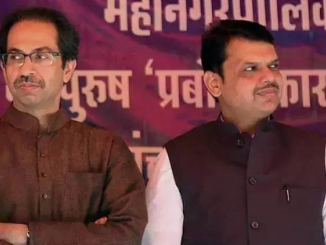
United States Secretary of State Hillary Clinton, Australia‘s Defense Minister Stephen Smith, India‘s National Security Advisor Shivshankar Menon and Foreign Secretary Ranjan Mathai have all spoken of the “Indo-Pacific” – a region spanning the Indian and the Pacific Oceans – as the world’s new “strategic centre of gravity.” What is behind this new-found discovery of the Indo- Pacific and does it imply a strategic convergence between these three democracies?
A closer analysis suggests that the Indo- Pacific regional construction is driven more by a desire to resolve distinctive domestic and foreign policy preoccupations rather than promote a common regional vision. For the U.S., central policy issues include reversing the slide in its economic fortunes and dealing with the shift of power to Asia in ways that preserve existing international rules and the U.S.’s position as the world’s foremost rule-maker. Australia has long been preoccupied by the disjuncture between its geographical positioning in Asia and its historical links with the West.
The implications of continuing a close alliance with the U.S., while growing increasingly economically enmeshed with Asia, have dominated recent foreign policy debates. The Indo-Pacific regional construction is a key part of the U.S.’s “pivot to Asia,” which Australia has supported. For both the Australian and U.S. policymakers, adopting and shaping the “Indo-Pacific” as a geostrategic category helps them resolve their key domestic and foreign policy dilemmas while maintaining their positions in the global order as a great power and middle power respectively.
Fitting in India
But how does India fit into this emerging concept? While India supports a basic adherence to international law, freedom of navigation and peaceful dispute settlement, it is increasingly clear that its preferred regional architecture in the “Indo-Pacific” will be shaped by the demands of its domestic economic restructuring and its continuing adherence to the principle of strategic autonomy.
For this reason, any assumption that India will sign up to an Indo-Pacific security architecture devised in Washington and Canberra fundamentally misreads the domestic political projects that animate India’s own vision of the Indo- Pacific. To see how different domestic imperatives lead to distinctive Indo-Pacific regional constructions, we can examine some of the major regional initiatives that have recently been promoted by the U.S., Australia and India.
Leaving out China
The U.S. has recently launched the Trans- Pacific Partnership (TPP), a free trade initiative that does not involve China and includes trade, investment, intellectual property, health care, environmental and labor standards. It has also called for a “regional architecture of institutions and arrangements to enforce international norms on security, trade, rule of law, human rights, and accountable governance” in the Indo-Pacific region.
These regional initiatives are built on the promotion of regulatory frameworks in the Indo-Pacific – in areas such as intellectual property rights – that serve domestic political and economic agendas, namely increasing the competitiveness of the American economy and maintaining U.S. prominence as a global rule-setter. It is thus central to emerging geo-economic competition over the regulation and rules of the regional and global political economy.
The Australian bridge
Australia, meanwhile, is attempting to act as a classic middle power bridge between the East and West by balancing its commitment to a U.S.-driven framework of rules and regulations with the knowledge that its economic future is increasingly intertwined with Asia and China, in particular.
To manage these growing tensions, it has encouraged the U.S. pivot to the Indo- Pacific while advocating greater political, economic and strategic enmeshment between the U.S. and China and refocusing its attention on the Indian Ocean Rim- Association for Regional Cooperation (IORARC). Australia has also welcomed both the U.S.-centred TPP as well as the Association of South-East Asian Nations (ASEAN)- centred Regional Comprehensive Economic Partnership (RCEP).
The RCEP includes China and focuses on a narrower set of issues than the TPP, excluding issues such as labor standards, which would deter China from ascension. Despite the differences between the two schemes, Australia regards the TPP and RCEP as complementary pathways to a regional free trade area and has vowed to promote the inclusion of elements such as environmental and labor standards during RCEP negotiations.
Despite embracing the Indo-Pacific concept, India is not a member of the TPP but has joined the RCEP. The TPP’s rigid objectives of regulatory coherence do not fit with India’s stated desire for a “plural, inclusive and open security architecture in the Indo-Pacific” and India has long resisted the inclusion of non-trade related provisions in multilateral trade negotiations.
RCEP’s provisions for “the different levels of development of the participating countries” and ASEAN’s emphasis on consensual decision-making are far more conducive to the type of regional architecture that India desires, since they are more congruent with its domestic imperatives of development and autonomy. This suggests the contested nature of the Indo-Pacific.
Domestic imperatives also drive India’s increased attention to regional groupings like the IOR-ARC and smaller, more specialized forums that deal with issues like piracy, energy and food security. These initiatives focus on non-traditional security issues, which India sees as posing the most significant external threat to its economic development.
This bottom-up, issue-driven approach to Indo- Pacific regionalism may prove, over the long run, to be more sustainable than the elitedriven regional projects that were the hallmark of Asia-Pacific regionalism. Hence, a new “Indo-Pacific” era may well be dawning. But the adoption of the concept in the foreign policy debates and vocabularies of India, Australia and the United States reflect a heightened focus in all three countries on domestic political and economic challenges rather than a strategic convergence or a common regional vision.





Be the first to comment